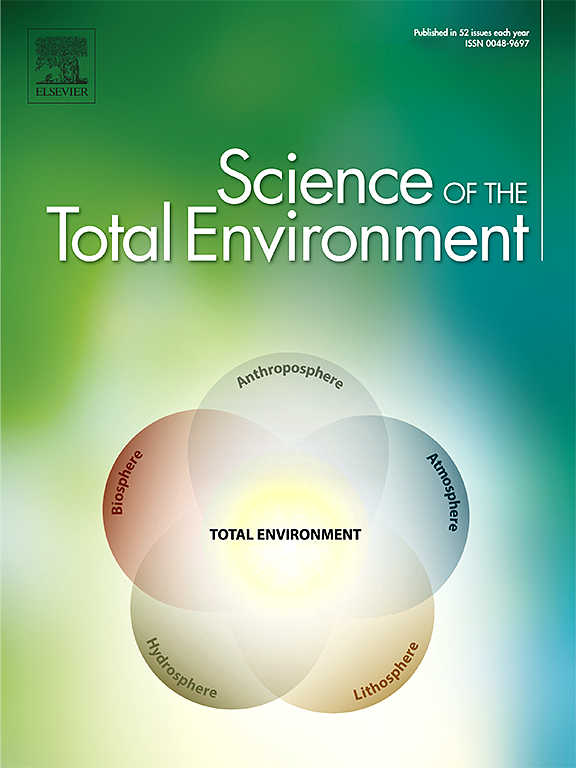Asymmetric environmental responses on evapotranspiration in Tibetan Plateau grassland
IF 8
1区 环境科学与生态学
Q1 ENVIRONMENTAL SCIENCES
引用次数: 0
Abstract
Evapotranspiration (ET) from the Tibetan Plateau (TP) grasslands plays a critical role in regulating water storage in the Asian Water Tower. However, the patterns, drivers, and responses of ET to climate change remain largely understudied due to limited observational data. This study integrated eddy covariance and long-term remote sensing data to examine the spatial patterns of ET and its drivers across the TP, comparing these patterns with those in other grassland ecosystems of the Northern Hemisphere. In the eastern TP, ET was primarily influenced by vapor pressure deficit and net radiation, whereas in the western TP, the impact of these two factors on the ET was significantly reduced. The regional differences were attributed to the unique energy-limited conditions in the eastern TP, which were driven by the East Asian monsoon and large-scale atmospheric circulation. In contrast, ET in other grassland ecosystems of the Northern Hemisphere, such as the North American Prairie and the Mongolian Plateau, was mainly controlled by water availability (e.g., precipitation and soil water content), similar to the western TP region. Under future climate warming, ET in the eastern TP is expected to increase significantly compared to other grasslands, particularly in the SSP5-8.5 scenario. This study revealed the distinct mechanisms regulating ET in TP grasslands and emphasized the need for further research on how grassland ET responds to global environmental changes.

青藏高原草地蒸散发的不对称环境响应
青藏高原草原的蒸散发(ET)在调节亚洲水塔的储水量中起着关键作用。然而,由于观测数据有限,ET的模式、驱动因素和对气候变化的响应在很大程度上仍未得到充分研究。本研究综合涡旋相关方差和长期遥感数据,研究了青藏高原蒸散发及其驱动因素的空间格局,并与北半球其他草原生态系统蒸散发的空间格局进行了比较。在东部高原,蒸散发主要受水汽压亏缺和净辐射的影响,而在西部高原,这两个因素对蒸散发的影响显著减弱。东亚季风和大尺度大气环流共同驱动了青藏高原东部独特的能量限制条件。与此相反,北半球其他草原生态系统(如北美草原和蒙古高原)的ET主要受水分有效性(如降水和土壤含水量)的控制,与西部TP地区相似。在未来气候变暖的背景下,青藏高原东部的ET将显著增加,特别是在SSP5-8.5情景下。本研究揭示了青藏高原草地ET的不同调节机制,并强调需要进一步研究草地ET对全球环境变化的响应。
本文章由计算机程序翻译,如有差异,请以英文原文为准。
求助全文
约1分钟内获得全文
求助全文
来源期刊

Science of the Total Environment
环境科学-环境科学
CiteScore
17.60
自引率
10.20%
发文量
8726
审稿时长
2.4 months
期刊介绍:
The Science of the Total Environment is an international journal dedicated to scientific research on the environment and its interaction with humanity. It covers a wide range of disciplines and seeks to publish innovative, hypothesis-driven, and impactful research that explores the entire environment, including the atmosphere, lithosphere, hydrosphere, biosphere, and anthroposphere.
The journal's updated Aims & Scope emphasizes the importance of interdisciplinary environmental research with broad impact. Priority is given to studies that advance fundamental understanding and explore the interconnectedness of multiple environmental spheres. Field studies are preferred, while laboratory experiments must demonstrate significant methodological advancements or mechanistic insights with direct relevance to the environment.
 求助内容:
求助内容: 应助结果提醒方式:
应助结果提醒方式:


